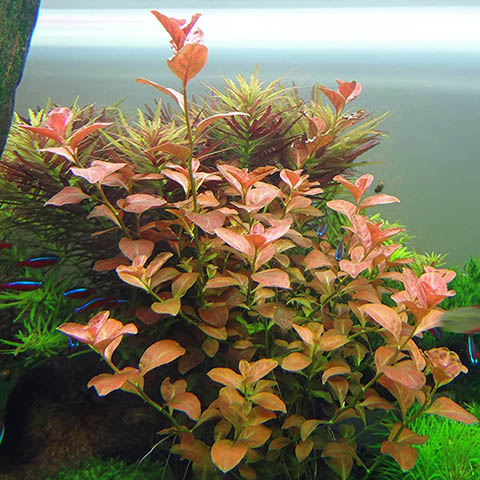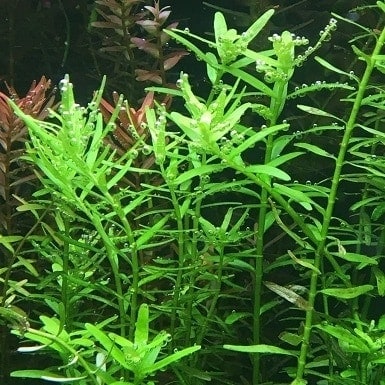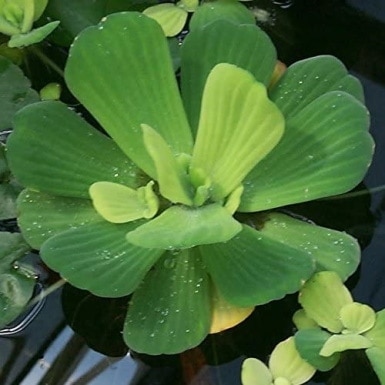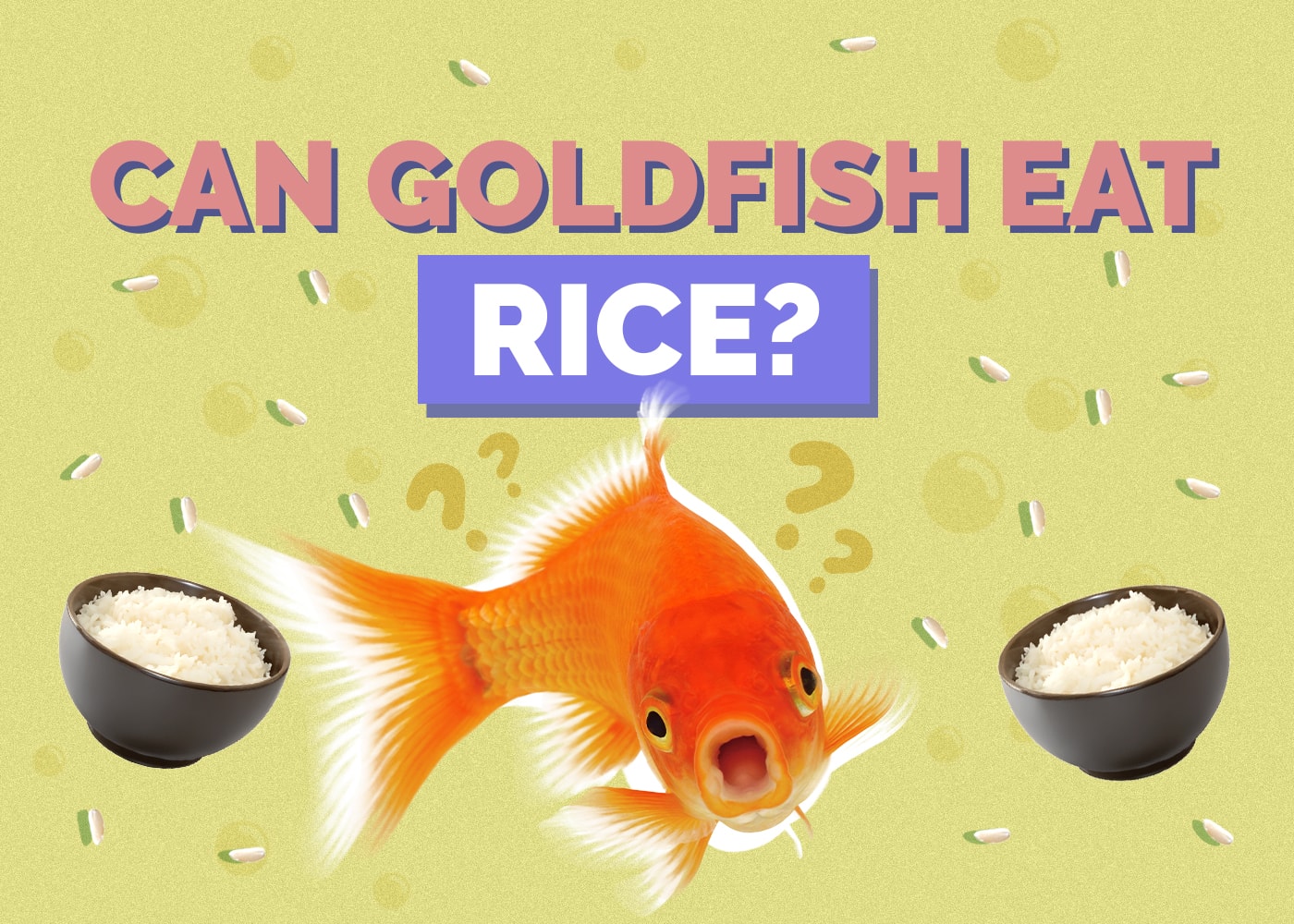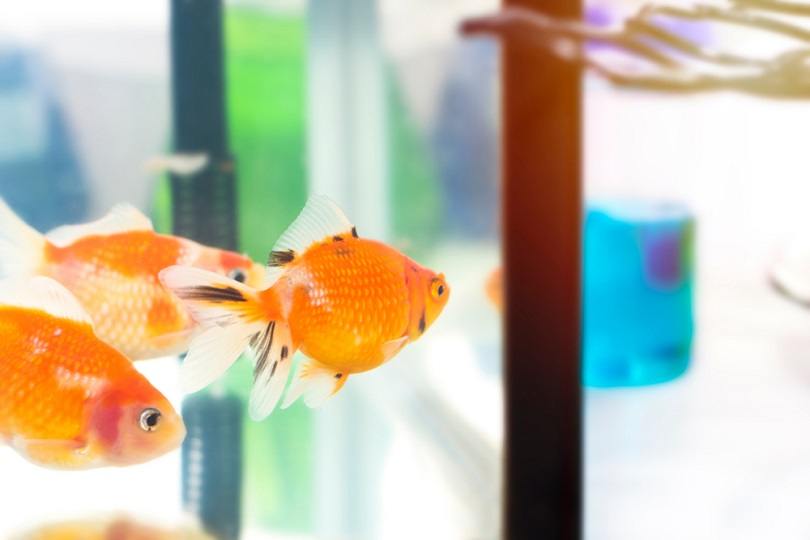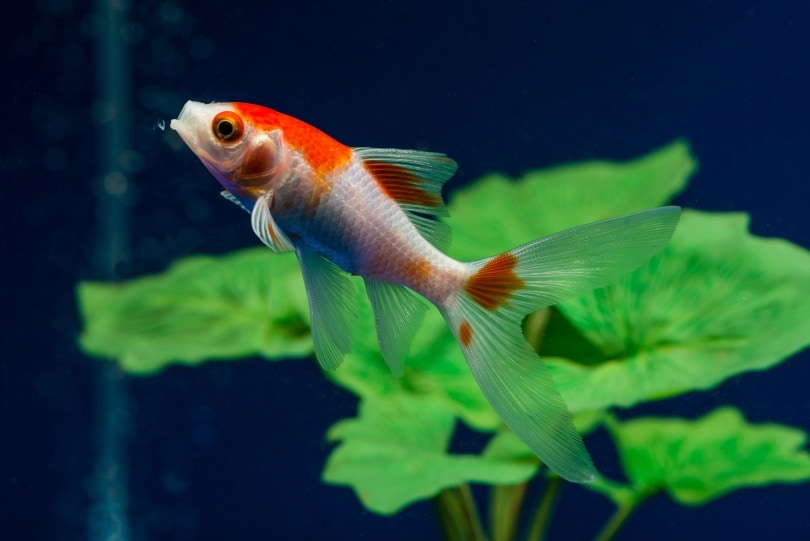15 Best Flowering Aquarium Plants – 2024 Reviews & Top Picks

Updated on
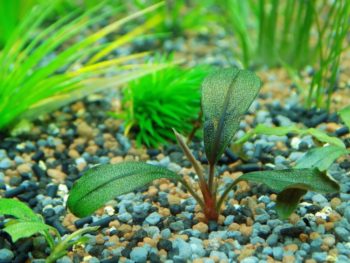
Whether you’re new to the world of keeping aquarium plants or are just looking to liven up your aquarium space, flowering aquarium plants may be an excellent choice for you.
Flowering aquarium plants come in all shapes, sizes, and colors, and can produce anything from tiny to large flowers. Some plants bloom underwater while others will produce shoots, sending colorful flowers out of the top of your tank.
Caring for flowering plants in your aquarium can be a rewarding experience and may even help improve water quality and provide enrichment for your aquarium friends. Use these reviews to help guide you in determining which flowering aquarium plants may be a good option for your tank setup and aquarium residents.
A Quick Comparison of Our Favorites
| Rating | Image | Product | Details | |
|---|---|---|---|---|
| Best Overall |
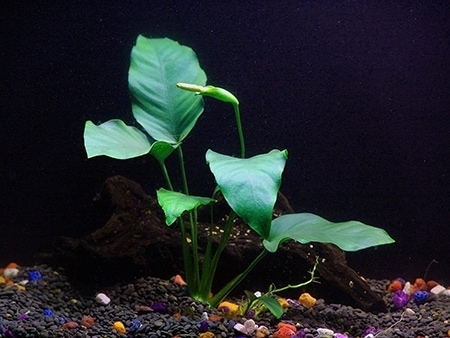
|
Anubias |
|
Check Price |
| Best Value |

|
Ludwigia Repens |
|
Check Price |
| Premium Choice |

|
Hornwort |
|
Check Price |

|
Bucephalandra |
|
Check Price | |

|
Amazon Sword |
|
Check Price |
The 15 Best Flowering Aquarium Plants
1. Anubias
- Growth rate: Slow
- Max height: 16 inches
- Light demands: Low
- CO2: Environmental, Supplemental
- Difficulty: Easy
Anubias is a hardy plant, able to grow in a variety of aquarium environments. It’s easy to grow, which makes it a great option for beginners to planted aquariums. Most fish will not eat Anubias, but some, like goldfish and cichlids, may attempt to uproot it. It is slow-growing but if you keep it happy, you’ll be rewarded with small, white, underwater flowers that look similar to those of Peace Lilies. Many underwater plants will send up shoots and flower above the water, but Anubias can flower above or below the waterline. It has low light requirements and CO2 supplementation is optional.
Anubias is an aquatic plant but can tolerate being planted along the water’s edge. It’s a rhizomatic plant with root off-shoots, so it’s relatively easy to propagate. It can be planted in substrate or left to float, but it grows best when trained to attach to a surface like driftwood or rocks. Anubias prefers slightly acidic to neutral pH and prefers temperatures between 72–82˚F.
- Easy to grow
- Flowers underwater
- Easy to propagate
- Hardy
- Supplementation is optional
- Can grow underwater or along waterline
- Most fish will not eat it
- Slow growth rate
- Grows best when attached to a surface
2. Ludwigia Repens
- Growth rate: Fast
- Max height: 20 inches
- Light demands: Moderate to High
- CO2: Environmental, Supplemental
- Difficulty: Easy
Ludwigia Repens is an easy-care, colorful addition to any freshwater aquarium. The leaves are green-tinged on top with shades of red underneath. Ludwigia Repens will only sprout flowers once the shoots reach over the waterline, but the leaves are beautiful all their own if your tank does not allow for growth above the water. The flowers are small but are a bright, creamy yellow. If Ludwigia Repens is allowed to flower until the flowers dry up and die, seeds will drop into the water and settle into the substrate, growing new plants.
This plant grows quickly, propagates from seeds and clippings easily, and requires CO2 supplementation only for ideal growing conditions. This plant does require moderate to high light for best growth, which can result in algae blooms if not kept in check. Many fish enjoy swimming through the forest of growth that multiple Ludwigia Repens plants can create.
- Easy to grow
- Hardy
- Grows quickly
- Propagates easily
- Many fish enjoy the protection this plant offers
- Colorful leaves and flowers
- Only blooms above the waterline
- Moderate to high light requirements
- CO2 supplementation for best growth
3. Hornwort
- Growth rate: Fast
- Max height: 10 feet
- Light demands: Moderate
- CO2: Environmental
- Difficulty: Easy
Hornwort is a great flowering plant for aquariums and is exceptionally easy to grow. It grows tall and full, making it a nice choice for fry and small fish that like to hide among plants. Due to its rough spines, many fish will not eat it, although some fish will pick at it and shed the spines into the water. Hornwort has petite flowers that blossom under the waterline. They are various shades of green and rosette-shaped, similar to succulents.
Hornwort is a hardy plant, thriving even in poor water conditions, and it even works to improve water quality by using toxins and waste within the water as fuel for its growth. It’s also one of the best oxygenators for aquariums. It can be planted in substrate or left to float, tolerates a temperature range from around 60–85˚F, and prefers slightly acidic to neutral pH.
- Rapid growth rate
- Most fish will not eat it
- Hardy
- Easy to grow
- Many fish enjoy the protection this plant offers
- Improves water quality and oxygenates
- Prefers moderate lighting
- Can shed spines into the water
4. Bucephalandra
- Growth rate: Slow
- Max height: 10 inches
- Light demands: Low to High
- CO2: Environmental
- Difficulty: Easy
Bucephalandra is a plant many aquarists are not familiar with, but it is growing in popularity due to its lush appearance and hardiness. It can grow fully submerged as well as above the waterline and can survive in inhospitable environments. It can produce pink or white flowers on shoots above the waterline. Bucephalandra can root in a fine substrate, like sand, but it grows best when it is trained to attach to hard surfaces. Driftwood is a good option, but porous surfaces like lava rock are a great option that can double as a home for good bacteria in your tank.
Bucephalandra is very slow growing but grows most quickly in high lighting. Even in low lighting though, it will grow well over time. It does not require CO2 supplementation, but supplementation may speed up its growth, although it will still be slow. If sudden changes occur in its environment it will often drop most or all of its leaves, but they grow back once the plant adjusts to its environmental changes.
- Easy to grow
- Low lighting is adequate
- Extremely hardy
- Will grow without CO2 supplementation
- Easy to propagate
- Very slow growth rate
- Grows best on hard surfaces
5. Amazon Sword
- Growth rate: Moderate
- Max height: 20 inches
- Light demands: Moderate
- CO2: Environmental, Supplemental
- Difficulty: Easy
Amazon Swords are one of the most common aquarium plants and with the right care, they will flower routinely. Amazon Swords grow white flowers on tall shoots above the water, although these flowers do sometimes bloom underwater as well. These plants are pretty hardy, but they love CO2 supplementation and nutritious substrate. They can grow tall and serve as nice hiding spots for fish that enjoy aquascaping in their environment.
Amazon Swords have tender leaves that are easily damaged by fish like cichlids and Plecostomus and they grow best in community tanks with more gentle fish, like guppies. They prefer tropical temperatures and slightly acidic to neutral pH.
- Can flower throughout the year
- Easy to grow
- Good hiding spot for shy fish
- Hardy
- CO2 supplementation is optional
- Moderate lighting needs
- Needs nutritious substrate
- Prefers warm water
6. Giant Hygrophila
- Growth rate: Fast
- Max height: 20 inches
- Light demands: Moderate to High
- CO2: Supplemental
- Difficulty: Easy
Giant Hygrophila is a tall plant that can live submerged or partially submerged below the waterline. It grows quickly when provided with a nutritious substrate, CO2 supplementation, and moderate to high lighting. In low lighting or without supplementation, Giant Hygrophila’s leaves may yellow and even fall off. Giant Hygrophila will produce stalks with periwinkle flowers above or below the waterline. This plant prefers gentle-moving water, making it ideal for aquariums.
Like Hornwort, Giant Hygrophila will consume toxins within the water, helping to improve water quality. It’s native to tropical environments, so it prefers water temperatures above 75˚F but can grow in cooler temperatures as well. It can thrive in pH levels of 6.0–8.0, making it a good option for aquariums with fish that survive in acidic, neutral, or basic water. Giant Hygrophila’s leaves are tender and easily damaged, so this plant does not do well with fish like goldfish and cichlids.
- Rapid growth rate
- Survives a wide pH range
- Easy to grow
- Survives above and below the waterline
- Improves water quality
- Prefers gentle-moving water
- Moderate to high light requirement
- Leaves are easily damaged
- Grows best with supplementation
- Prefers warm water
7. Rotala Rotundifolia
- Growth rate: Fast
- Max height: 12 inches
- Light demands: Moderate
- CO2: Environmental, Supplemental
- Difficulty: Easy
Rotala Rotundifolia is an excellent plant for aquarist beginners due to its ease of care. This plant has red, pink, and green varieties, making it a colorful option even when not in bloom. It is tender and does not do well with fish that may uproot it or chew on its leaves, but fish like guppies and mollies will appreciate the hiding places it provides. Rotala Rotundifolia grows quickly and does not require CO2 supplementation in its environment, although it grows best with it.
In environments with low nitrate levels, Rotala Rotundifolia will take on darker shades of red or green but the growth of the plant may be stunted. It prefers moderate lighting and will likely require routine trimming to keep it under control. Rotala Rotundifolia plants do not usually break the water’s surface, but when they do, they can produce multiple small, purple or pink flowers stacked on each other up the flowering shoot.
- Rapid growth rate
- Easy to grow
- Hardy
- Colorful stalks, leaves, and flowers
- Does not require CO2 supplementation
- Provides hiding places for aquarium residents
- Produces multiple blooms at a time
- Great for beginners
- Does not flower very often
- Requires routine trimming
- Moderate light requirement
- Tender leaves and stalks
8. Aquarium Banana Plant/Banana Lily
- Growth rate: Moderate
- Max height: 18 inches+
- Light demands: Low to High
- CO2: Environmental
- Difficulty: Easy
Aquarium Banana Plants are not a banana plant at all, but they’re named for the banana-shaped tubers at the base of the plant. These tubers are green and function to store nutrients for the plant. The plant will send up shoots and lily pads will reach the water’s surface. These plants bloom small, white flowers above the waterline in ideal conditions. Banana Lilies can be planted in substrate, but in calm aquarium waters, they can root themselves. They are heavy enough to sink most of the way but light enough to float just above the substrate and will eventually drop roots into the substrate.
If you plant the Banana Lily into the substrate yourself, it’s important to keep the tubers above the substrate to avoid suffocating the plant. Banana Plants do not require CO2 supplementation, but they do need nutrient-rich substrate or water supplementation. The tubers of this plant around only a couple of inches long, but the plant’s shoots can reach upwards of 18 inches. The plant cannot repair damaged leaves so these need to be removed to avoid wasting nutrients.
- Easy to grow
- Unique appearance
- Can root itself into substrate
- Does not need CO2 supplementation
- Height is variable based on water depth
- Requires nutritional substrate or supplementation
- Prefers water with little to no current
9. Dwarf Sagittaria Subulata
- Growth rate: Fast
- Max height: 20 inches
- Light demands: Moderate
- CO2: Environmental, Supplemental
- Difficulty: Moderate
Dwarf Sagittaria Subulata is a grass-like aquarium plant that grows quickly and propagates easily via runners. It appreciates CO2 supplementation but does not require it if its other nutritional needs are met. Dwarf Sagittaria requires nutritional supplementation with iron and its leaves will begin to die without it. It has moderate lighting requirements but grows most quickly under high lighting. Under high lighting, Dwarf Sagittaria’s leaves will begin to take on a slightly red tinge. If supplemented well and provided with appropriate lighting, this plant may even send up shoots of small, white flowers with three petals each.
Nutritional needs aside, Dwarf Sagittaria tolerates a broad pH range and is one of the few aquarium plants that will tolerate a basic pH. It also can survive in brackish water. Dwarf Sagittaria, if cared for properly, can create a beautiful carpet of green in your aquarium.
- Survives a broad range of pH
- Rapid growth rate
- Can create aquarium carpet
- Can live in freshwater or brackish water
- Does not require added CO2
- Changes color in high lighting
- Propagates easily
- Moderate light requirement
- Needs nutritional supplementation
10. Dwarf Water Lily
- Growth rate: Moderate
- Max height: 6 inches+
- Light demands: Moderate
- CO2: Environmental, Supplemental
- Difficulty: Moderate
Dwarf Water Lilies are a great aquarium option if you want a plant to liven up your tank while also casting shade for the fish below. Like Dwarf Sagittaria, this plant does not require CO2 supplementation but does require a nutritious substrate or water fertilizer with iron to grow. This high nutritional requirement does make them a great choice for absorbing toxins from the water. If they’re given moderate lighting, Dwarf Water Lilies will grow underwater leaves, send up reddish lily pad shoots to the water’s surface, and produce various colors of flowers including white, yellow, and lavender.
Aside from their nutritional requirements, Dwarf Water Lilies are relatively easy to grow from bulbs. They do not usually require pruning, but the lily pad leaves will die from time to time, needing to be removed from the water to reduce circulating biological waste. Water Lilies are traditionally thought of as pond plants, but the Dwarf Water Lily makes a beautiful option for indoor tanks no matter how small thanks to its small stature.
- Moderate growth rate
- Colorful leaves, lily pads, and blooms
- Provides shade to shy fish
- Does not require CO2 supplementation
- Needs nutritional supplementation
- Moderate lighting requirement
- May require pruning as leaves die
11. Madagascar Lace Plant
- Growth rate: Moderate
- Max height: 20 inches
- Light demands: Moderate to high
- CO2: Supplementation
- Difficulty: Moderate
Madagascar Lace Plants are exceptionally unique aquarium plants with the leaves having a web-like appearance. They require nutritional supplementation, including CO2, and moderate to high lighting for maximum growth. When Madagascar Lace Plants are kept in their preferred environment, they will send up shoots that grow dozens of tiny lavender or periwinkle flowers above the waterline. These plants produce rhizomes and are easy to propagate.
The biggest consideration to take with Madagascar Lace Plants is that they require a period of dormancy to survive. This dormancy involves all the plant’s leaves dying, causing many people to think their plant has died. While many varieties of plants go through dormancy in cold weather, Madagascar Lace Plants require an increase in water temperature during dormancy. While not dormant, these plants require water temperatures of 65–75˚F but during dormancy this temperature range changes to 76–82˚F.
- Moderate growth rate
- Unique appearance
- Produces multitudes of tiny flowers
- Propagates easily
- Makes a great tall aquarium plant
- Requires CO2 supplementation and nutritional supplementation
- Moderate to high light requirement
- Requires knowledge of its dormancy period
12. Water Lettuce
- Growth rate: Fast
- Max height: 10 inches
- Light demands: High
- CO2: Environmental, Supplementation
- Difficulty: Moderate
Water Lettuce, also known as Water Cabbage, looks similar to these namesakes. It’s a floating plant that grows best outdoors but can make a lovely addition to indoor tanks. It’s up to 10 inches tall, but usually is closer to two inches tall, and reaches up to 10 inches across. Water Lettuce is rosette-shaped and produces small white flowers between leaves. These plants grow long, dangling roots that many fish enjoy swimming through, although fish like goldfish may consume the roots even the leaves of these plants. They grow best with CO2 supplementation and have high humidity requirements, so they may need to be kept in rooms with high humidity or under a tank hood.
These plants do move with water flow, so they may get caught underneath the running filter water. The best way to keep this plant from being dunked underwater is by creating small, fenced areas with airline tubing or other floating items that fish will not eat.
- Unique appearance
- Fish enjoy the forest-like roots
- Create great shade in the tank
- Rapid growth rate
- Require high humidity
- Fish may eat the dangling roots
- High light requirements
- May need to be roped off
13. Cabomba/Fanwort
- Growth rate: Fast
- Max height: 20 inches
- Light demands: Moderate
- CO2: Environmental, Supplemental
- Difficulty: Easy
Cabomba is an easy-care aquarium plant with a rapid growth rate, reaching heights up to 20 inches. It grows best with high light, although it can survive moderate lighting. This plant does not require CO2 supplementation, but it does take on a fuller, healthier look with it. Cabomba is similar in appearance to hornwort but has a fluffier, softer look to its spines. Once it reaches above the waterline, Cabomba can produce small white, purple, or yellow flowers.
This plant’s spines and stems are tender, and many fish will enjoy eating them, especially goldfish, cichlids, and even different varieties of Plecostomus. Cabomba can be planted in substrate or floated in a tank. This plant makes a great nursery for fry and shrimp and small, shy fish will enjoy swimming through its bushy growth.
- Rapid growth rate
- Does not require CO2 supplementation
- Tall, full growth
- Produces bright flowers
- Can be planted or floated
- Moderate to high light requirement
- Herbivorous and omnivorous fish may eat it
14. Ruffled Sword
- Growth rate: Moderate
- Max height: 20 inches
- Light demands: Moderate
- CO2: Environmental, Supplemental
- Difficulty: Easy
Ruffled Swords produce tall, green leaves with ruffled edges. Most fish will not bother these plants, even fish that usually uproot or eat aquarium plants. These plants do have a moderate growth rate, so if you have a fish that is particularly interested in eating it, it will take longer than plants like Hornwort and Cabomba to grow back. Ruffled Swords require a nutritious substrate or nutritional supplementation and prefer CO2 supplementation within the water. Ruffled Swords need iron supplementation and are sensitive to copper. Ruffled Swords produce shoots that allow for gladiolus-like flowers above the water. These flowers can be various shades of white, pink, purple, and red. Can be easily propagated via rhizome division.
- Easy to grow
- Tall plant with colorful flowers
- Do not require CO2 supplementation
- Most fish will not eat or uproot this plant
- Easy to propagate
- Need nutritional substrate or supplementation
- Moderate light requirement
- Moderate growth rate
15. Peace Lily
- Growth rate: Moderate
- Max height: 40 inches
- Light demands: Low
- CO2: Environmental
- Difficulty: Easy
Peace Lilies have long been thought of as household plants, but many people do not think of them as aquarium plants. Peace Lilies are tropical plants that thrive in humidity, low light, and indoor temperatures, making them a great choice of flowering plant for aquariums. There are dozens of varieties of Peace Lilies, ranging from about a foot tall to over five feet, so make sure to choose a variety that will not get too large for your aquarium. The plant’s roots will create a nice forest-like area for your fish to swim in.
Peace Lilies are often seen planted in betta bowls or tanks but are a beautiful, safe option for most fish. These plants have tall, green leaves and will send up tall shoots with white flowers multiple times per year. Peace Lilies do need to be kept away from drafts as they can be sensitive to temperature changes. Also, keep in mind that these plants can be toxic to cats and dogs, so it’s best to avoid them in homes with furry pets. A bonus with Peace Lilies is that they are on NASA’s list of air-cleaning plants.
- Low light requirement
- Thrive indoors
- Fish enjoy swimming through the long roots
- Dozens of varieties are available
- Does not require CO2 supplementation
- Easy to grow
- Moderate growth rate
- Toxic to cats and dogs
- Some varieties are too large for aquariums
- Sensitive to temperature changes

Conclusion
After reading through the reviews of these fifteen plants, what do you think? Did you find the perfect flowering plant to bring joy and life to your tank and your home? We love our aquariums and underwater pals and only want the best for their environment. Doing research and using reviews like these as a guide will help you make informed decisions while working toward the aquascape of your dreams.
Featured Image Credit: Pixabay



